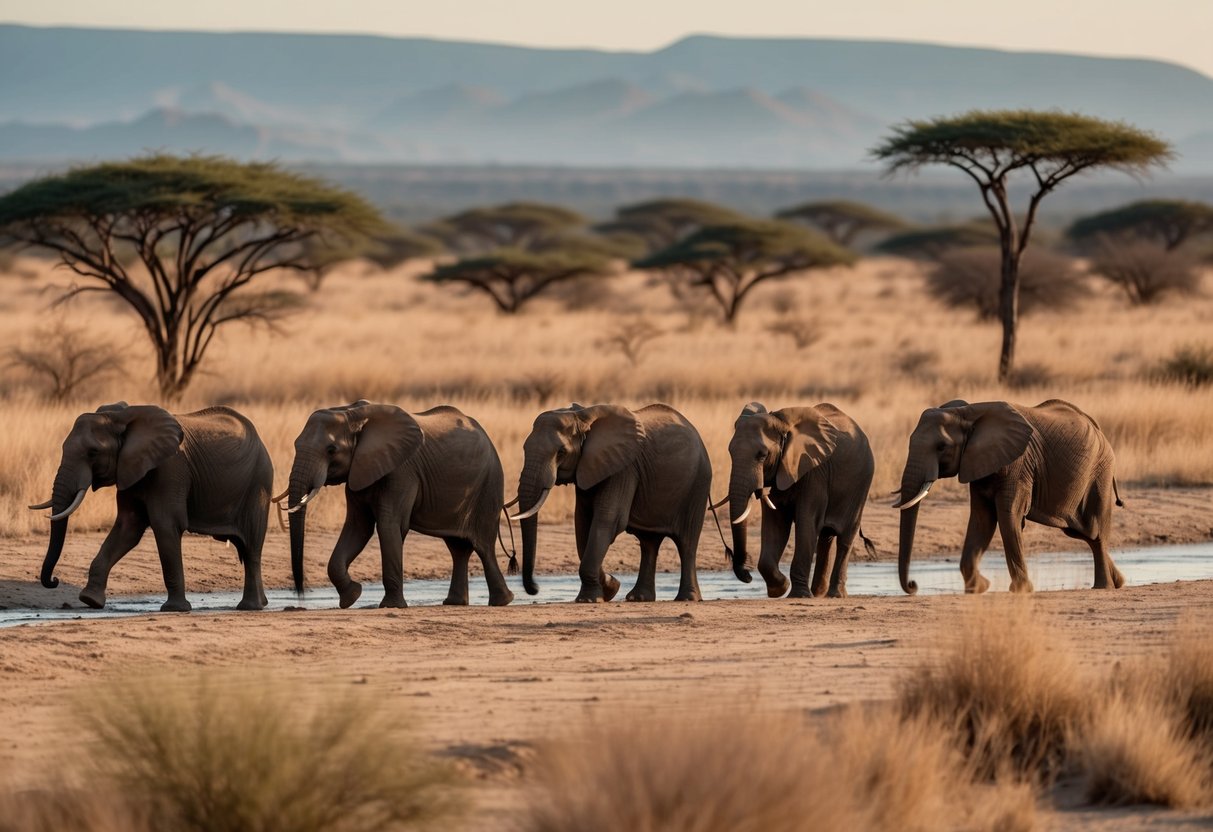
Accommodation Options
When exploring Samburu’s vast wilderness, accommodation choices offer a way to connect deeply with nature. Options range from charming tented camps immersed in natural beauty to luxurious retreats providing exceptional amenities and comfort.
Tented Camps and Lodges
Tented camps and lodges in Samburu offer intimate stays close to nature. Known for its exceptional riverside view and unique setting, the Elephant Bedroom Camp provides a memorable experience. Guests find themselves surrounded by a concentration of wildlife, allowing them to witness elephants up close, often right from their tent.
These accommodations typically feature canvas tents equipped with comfortable furnishings. For a stay deeply embedded in the natural environment, these camps offer an authentic safari experience combined with basic amenities that ensure a comfortable and unforgettable visit.
Luxury Retreats and Eco-Camps
Luxury retreats in Samburu focus on indulgence and eco-sustainability. Sasaab, for instance, offers an exquisite experience with Moroccan-style lodges and stunning vistas over the Laikipia Plateau. Here, guests enjoy infinity pools and guided bush walks, enhancing their connection to the wild landscape.
At Saruni Samburu, guests experience luxury alongside a commitment to the surrounding environment. The eco-camp emphasizes sustainable practices without compromising comfort. Private villas with panoramic views provide a serene and upscale refuge, blending seamless luxury with conservation efforts, making it an excellent choice for travelers seeking both elegance and stewardship of nature.
Best Time to Visit
The best time to visit Samburu National Reserve is during the dry season, which typically occurs from June to October and from December to March. During these months, the climate is more arid, and vegetation is sparse, making it easier to spot wildlife congregating around water sources.
Game viewing is particularly rewarding during the dry season, as animals like elephants, zebras, and lions seek out limited water. This period offers a greater likelihood of observing natural behaviors in a relatively open landscape, enhancing the safari experience.
Although wildebeest migration attracts attention in nearby Maasai Mara, Samburu offers unique wildlife experiences without large tourist crowds. Notably, visitors can spot rare species found in the northern plains, such as Grevy’s zebras and reticulated giraffes.
Those who prefer lush scenery might opt to visit during the wetter months, when the landscape transforms, but game viewing may be more challenging due to dense foliage and dispersed animal populations. In either season, Samburu’s diverse ecosystem promises memorable encounters.
Travel Tips and Preparation
Embarking on a safari in the Samburu National Reserve offers visitors the chance to explore one of East Africa’s most pristine regions. Prior preparation is essential for a fulfilling and enjoyable safari experience in this rich Kenyan wilderness.
What to Bring on Your Safari
Travelers should consider the climate in Kenya while packing. Lightweight, breathable clothing in neutral colors is recommended to blend in with the environment and maintain comfort during the warm days. A sturdy pair of binoculars can enhance wildlife viewing. Essential items include a wide-brimmed hat, sunglasses, and sunscreen to protect against the intense African sun. Comfortable, durable footwear is a must for walking safaris.
Insect repellent is crucial to guard against mosquitoes and other insects. A camera with a zoom lens is ideal for capturing Samburu’s diverse wildlife, ensuring a memorable photographic record of the journey. For evenings, a light jacket or sweater might be necessary, as temperatures can drop. It’s wise to bring a small first aid kit with basic medical supplies for minor injuries or ailments.
Health and Safety Guidelines
Health and safety are paramount when traveling through the Samburu region. Visitors should ensure vaccinations are up to date, notably for yellow fever and hepatitis. Malaria prophylaxis is advised due to the presence of mosquitoes in East Africa. Drinking bottled or sterilized water is recommended to avoid waterborne illnesses.
Awareness of local wildlife regulations and park rules ensures both visitor safety and conservation efforts. Hiring a local guide familiar with the area enhances safety and enriches the safari experience, providing insights into animal behavior and cultural context. Travelers should also carry a copy of their travel insurance and emergency contacts, ensuring ease of access if needed.